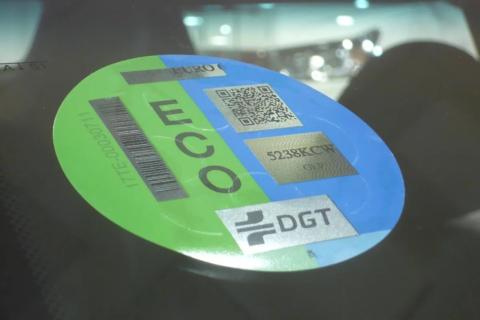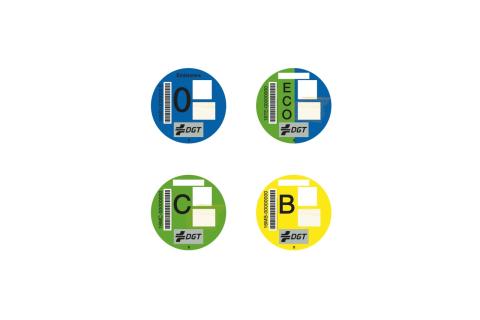The DGT environmental sticker has been with us for a long time, but there are still those who do not have it. We tell you what it is and where to get it, as well as where to put it in the car.
Although they have been with us for several years, there are still many drivers who do not have it. Next, we will explain where to get the DGT environmental sticker and where to put it.
Surely, you already know that these stickers are a badge that is placed on the windshield of the car and are used to classify the different vehicles according to their impact on the environment, that is, the amount of emissions they produce.
Although they are not mandatory, there are cities where they are used to restrict traffic on days where there is high pollution. Hence the importance of taking them so that those cars that are more respectful with the environment benefit from certain advantages.
However, as of January 1, 2023, all municipalities with more than 50,000 inhabitants must have a ZBE (Low Emission Zone), whose competence will fall on each municipality and will be in charge of establishing the requirements to access them, based on the DGT stickers.
Types of DGT stickers
The DGT stickers have their origin in the Plan Aire and are divided into four categories: label B, label C, label ECO and label ZERO.
Label B: it is the yellow label and identifies internal combustion vehicles that, although they do not comply with the latest EURO emission specifications, do comply with previous ones: passenger cars and light gasoline vans registered since January 1 from 2001 and diesel from 2006. Vehicles with more than 8 seats and heavy, both gasoline and diesel, registered since 2006.
Label C: it is green and refers to internal combustion vehicles that comply with the latest EURO emissions. Passenger cars and light gasoline vans registered from January 2006 and diesel from September 2015 will be entitled to this label. Vehicles with more than 8 seats and heavy vehicles, both gasoline and diesel, registered since 2014.
Eco Label: is the blue and green label and refers to most hybrid vehicles, gas or both. They will be entitled to this plug-in electric label with a range of less than 40 km, non-plug-in hybrids (HEV), vehicles powered by natural gas and gas (CNG and LNG) or liquefied petroleum gas (LPG). They must meet the criteria for label C.
ZERO label: blue in color, it is aimed at the most efficient vehicles. They will be entitled to this label battery electric (BEV), extended range electric (REEV), plug-in hybrid electric (PHEV) with a range of 40 km or fuel cell vehicles.
Where to get the DGT environmental sticker
At first, the DGT was in charge of sending the stickers to the users, but later they had to be purchased directly. First of all, the first thing to do is make sure which is the badge that corresponds to the vehicle in question.
This process can be carried out through the official website of the DGT, through its MiDGT mobile application, by means of a telephone call to 060 or in person.
The DGT environmental sticker can be obtained in five ways:
- At the post offices.
- In the network of workshops of the Spanish Confederation of Workshops (CETRAA) and other networks of authorized workshops.
- Administrative Managers.
- At the Institute of Automotive Studies (IDEAUTO).
- In the case of fleets, through the Ganvam association.
The issuance of the sticker has a cost of five euros, to which shipping costs should be added, as the case may be.
The issuance of the environmental sticker has a cost of five euros, a figure that could increase depending on shipping costs. Finally, we remind you that the label must be placed in the lower section of the right side of the windshield, so that it is perfectly visible to the agents.












